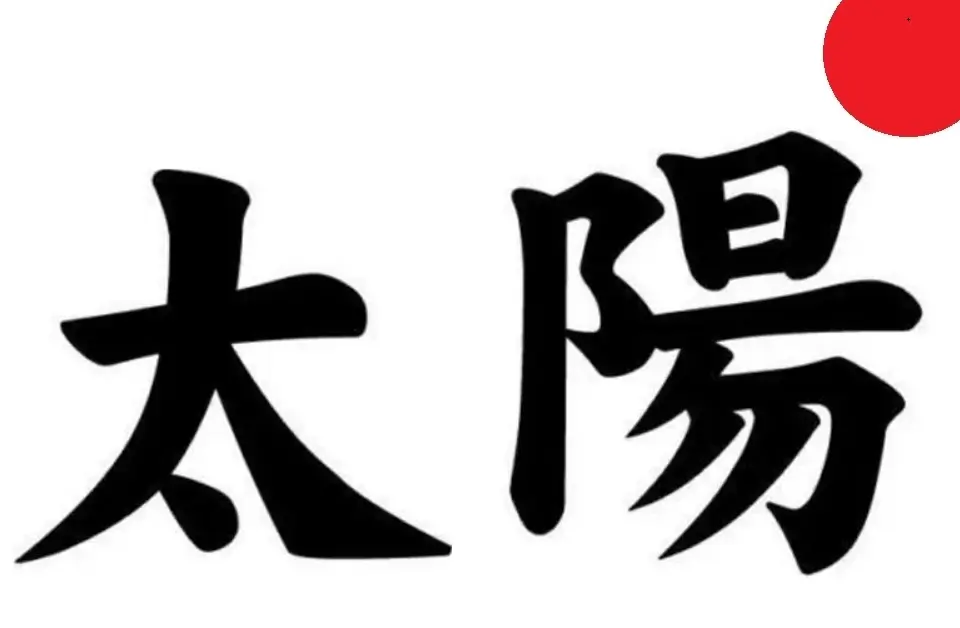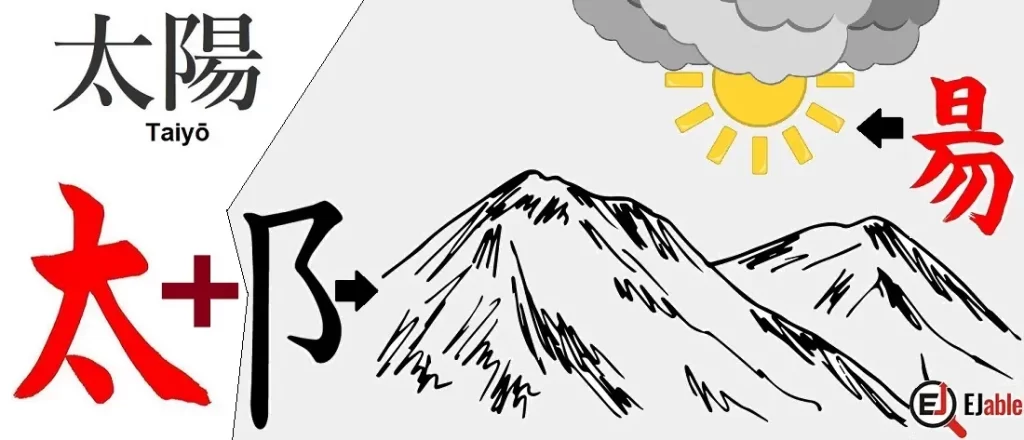Kanji for Sun as a Celestial Body: 太陽 (Taiyō)

The Sun in Japanese is also called Taiyō, which represents the sun more formally and scientifically, and the Kanji for Taiyō is 太陽.
Difference between the two Kanjis of the Sun: 日 (Hi) and 太陽 (Taiyō)
Both 太陽 and the sun’s Kanji 日 can refer to the sun, but they are used differently based on context and connotation.
太陽 (taiyō) is typically used in a more scientific, formal, or literary context. It’s the term you would use when specifically referring to the sun as a celestial body or an astronomical object. For example, when talking about the solar system (太陽系), solar energy (太陽エネルギー), or a solar eclipse (日食, where 太陽 is understood but not written).
日 (hi or nichi) is a broader term. It can mean the sun in a more general or everyday context, but it also means “day” or can refer to daytime. It’s used in words like today (今日), Sunday (日曜日), and Japan (日本). When referring to sunrise, you’d use 日の出, literally “the emergence of the sun/day.”
So, while both 太陽 and 日 can mean “sun,” 太陽 is more likely to be used when explicitly talking about the sun in a more formal or scientific context. 日 is more common in everyday language and can also mean “day,” depending on the context.
Origin of the Kanji 太陽
Sun’s Kanji, for its Japanese term “Taiyou” is made up of two kanji characters: 太 and 陽. The first character is the Kanji 太. The parent Kanji of 太 is 大 (Ō), which means big (Ōkī – 大きい). In Japanese, 太 (futo or tai) means fat. In Chinese, it also means extremely big. Overall, we can consider this kanji to represent “Large”) in a way representing the sun as large or mighty.
The second Kanji of taiyō is 陽, which is a combination of the Kanji radical for “Hill” (⻖), when it appears on the left side of a Kanji and character 昜 with the other Kanji for Sun (日) at the top.
Let’s see how to remember the complete Kanji for taiyō.
How to Remember the Kanji of Taiyō (Sun)
The best way to remember the Kanki of the Sun is to imagine a big Sun (日) over the Hills (⻖), with sunrays approaching the earth.
On the left-hand side, the Kanji representing Fat (Big) emphasizes that the Sun is Big or mighty.
The following picture represents the above logic visually to help you memorize the Kanji easily and unforgettably:


Explanation of the Above Picture to Remember the Kanji 太陽 (Sun)
- The right-hand side of the above picture shows the sun (日) over the hills (⻖). Consider the lower part of the character 昜 as the sun rays coming down.
- On the left-hand side, the Kanji for fat (big) acts as an adjective for the right-hand side of the picture to emphasize the mightiness of the sun or the vast sun.
Examples of the Usage of 太陽 (taiyō)
- 太陽系 (taiyōkei): This means “solar system.”
- 太陽エネルギー (taiyō enerugī): This means “solar energy.”
- 太陽が昇る (taiyō ga noboru): This means “the sun rises.”
Check other Kanji characters on the page “How to Learn Kanji. “


A long-term ex-pat in Japan, Himanshu comes with an IT background in SAP consulting, IT Business Development, and then running the country operations of an IT consulting multinational. Himanshu is the co-founder and Managing Director of ReachExt K.K. and EJable.com. He is also an Advisory Board Member of a Silicon Valley AI/IoT startup.

